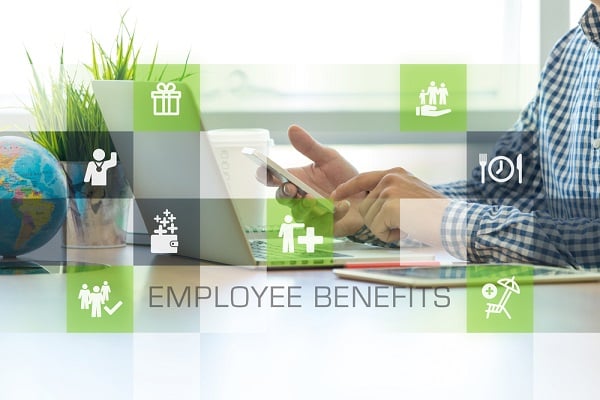 (Photo: iStock)
(Photo: iStock)
Look inside today’s workplace and the generational divide is clear. Never have four generations shared the workplace in such numbers. From boomers to Gen X to millennials to Gen Z – this generational mix is redefining how we collaborate, communicate, and engage across all industries.
While Gen X represents the second largest demographic in the workforce (31%), its rate has declined at the same rate that millennials (36%) have increased, according to a report from the U.S. Department of Labor. The same report showed that Gen Z has a growing presence in today’s workforce, representing 18% of workers. And in a unique turn of events, some baby boomers, now at 15% of the labor force and mostly at retirement age, are actually going back to work in response to economic pressures.
Recommended For You
What does all this mean for our workplace culture? Multigenerational mixes in the workplace offer a variety of industry experiences, they can also impact how team members approach tasks, and even prioritize work-life balance. Similarly, their needs outside of work can differ, offering a chance to reassess your total rewards strategy with consideration for different life stages. However, given the current macroeconomic environment, all generations have one thing in common: financial stress.
A shared struggle, different stories: Financial stress across the generations
Traditional financial wellness benefits packages are often built with the long term in mind. While 401(k) contributions, FSA and HSA benefits are helpful, the reality is that although wages are growing, they are struggling to keep pace with inflation, impacting employees’ ability to save for emergencies. In fact, 42% of Americans don’t have an emergency savings fund, according to a recent U.S. News & World Report’s 2025 Financial Wellness Survey. What’s more, a separate Vanguard report shares that 36% of Americans would struggle to cover an unexpected $400 expense. And this share does not factor in the employee who may have been struggling financially prior to macroeconomic factors outside of his or her control.
Given the current macroeconomic environment, employees are turning to credit cards or other high-interest options to manage daily expenses. For example, a recent Lending Tree survey found that 25% of groceries are funded with buy now, pay later loans, up from 14% the previous year. These alternative financing options for every day expenses are contributing to rising debt across the U.S., which the New York Fed reported balances grew $45 billion in Q4 2024 and were 4% higher than a year prior.
This growing financial pressure underscores a critical need: benefits can no longer take a one-size-fits-all or future-only approach. Organizations must reimagine how to support employees at every life stage, from early career professionals to mid-career employees to those nearing retirement.
One workforce, many journeys: Benefits that grow with your employees
While employer-sponsored benefits have evolved to include a focus on employee wellbeing, HR leaders have an opportunity to enhance their total rewards strategy by adding more personalized voluntary benefits that support employees on any journey.
For example, Fortune 500 employers are rolling out benefits where employees can apply student loan payments towards 401(k) matches from their employers, supporting over 42 million student loan borrowers. Additionally, mortgage assistance is gaining more traction as housing affordability and the 30-year fixed mortgage rate remain higher today than they were a decade ago. FSA dependent care, on the other hand, may be an attractive option to the nearly 11 million millennials assuming the care of children and at least one adult parent.
Further, as Gen Xers and Baby Boomers age, they may need access to more comprehensive health benefits, subsidies to afford rising premiums, and insurance to cover out of pocket expenses from accidents or critical illness.
Given the varying needs and priorities of different generations, adopting a more comprehensive approach to benefits – one that reflects the needs of multiple generations – pays off both short and long term. More than 60% of employees say that they are inclined to stay with an employer because of their benefits package, according to LIMRA. Moreover, implementing benefits focused on mental health can positively impact financial outcomes. According to OSHA, for every dollar invested in addressing mental health issues, businesses experience a four-dollar return in productivity gains.
Related: Employee benefits: Multigenerational workforces, AI, Rx costs, and rising health care costs
As organizations look to personalize benefits based on needs, they should also identify flexible options that are generation agnostic. For example, an employee purchase program allows any employee to cover essential items when they do not have immediate access to cash or affordable credit and allow them to repay for items over time through interest-free payroll deductions.
Additionally, emergency medical expenses can both surprise and add up. Supplemental health insurance, like gap insurance, accident insurance, and hospital indemnity insurance offer employees money to cover rising health care deductibles not covered by primary insurance. These alternative financing options help employees avoid fees associated with high-interest credit cards or payday loans.
Bridge the gap between what’s offered and what’s used
Identifying benefits is just the beginning. Ensuring employees understand those benefits and are aware they are there when they need them is key – both for utilization and to reduce financial stress.
According to a recent study, 85% of employees are confused by their benefits, creating an opportunity for employers to keep the benefits conversation continuing year-round. Conducting a survey in March every year helps measure what is working, where gaps exist, and identifies communications that can increase benefit use. Further, breaking down survey results by age groups can help HR teams tailor benefits communication to improve knowledge retention.
Organizations should collaborate with existing partners when filling benefit gaps, which can be helpful for smaller HR teams. For example, inviting your benefit provider to host webinars or in-person webinars to discuss healthy budgeting habits, can create an approachable environment for learning — without requiring employees to disclose personal needs.
Making your benefits work all year long
Macroeconomic issues can shift quickly, which can shake up employee priorities and shift their immediate focus from long-term retirement planning to addressing financial expenses.
To meet employees where they are, organizations should offer traditional and voluntary benefits targeted at generational needs. By putting employees’ needs first, employees will feel valued, improving employee engagement, productivity, and retention.
Stephanie Doherty is Chief People Officer at Purchasing Power®, where she leads the strategy for defining and maintaining a culture centered around the company’s purpose, mission and values. Her experience spans over 23 years in the financial services and real estate industries.
© Touchpoint Markets, All Rights Reserved. Request academic re-use from www.copyright.com. All other uses, submit a request to [email protected]. For more inforrmation visit Asset & Logo Licensing.






